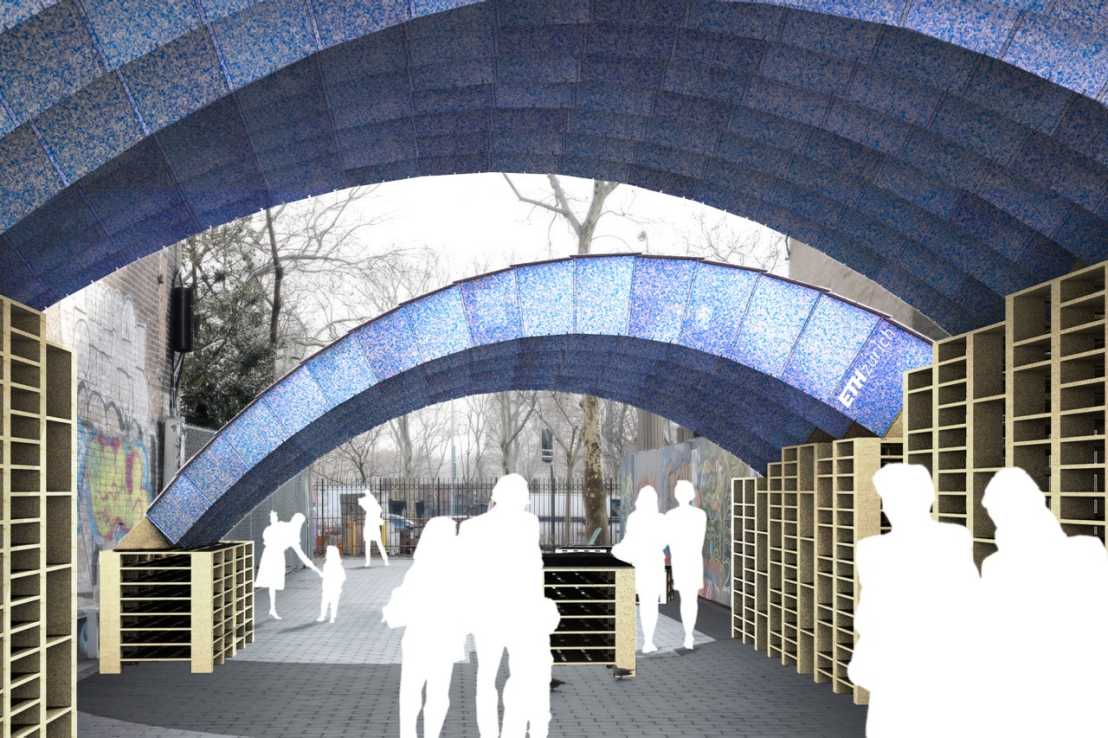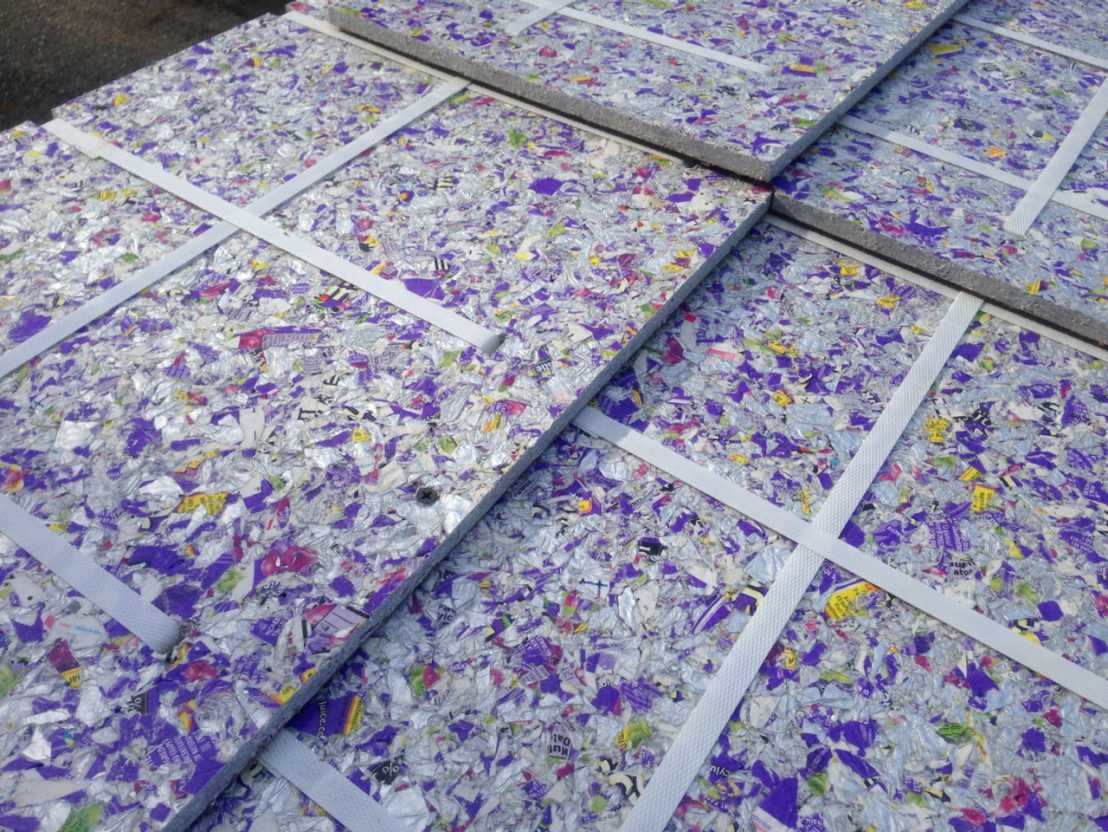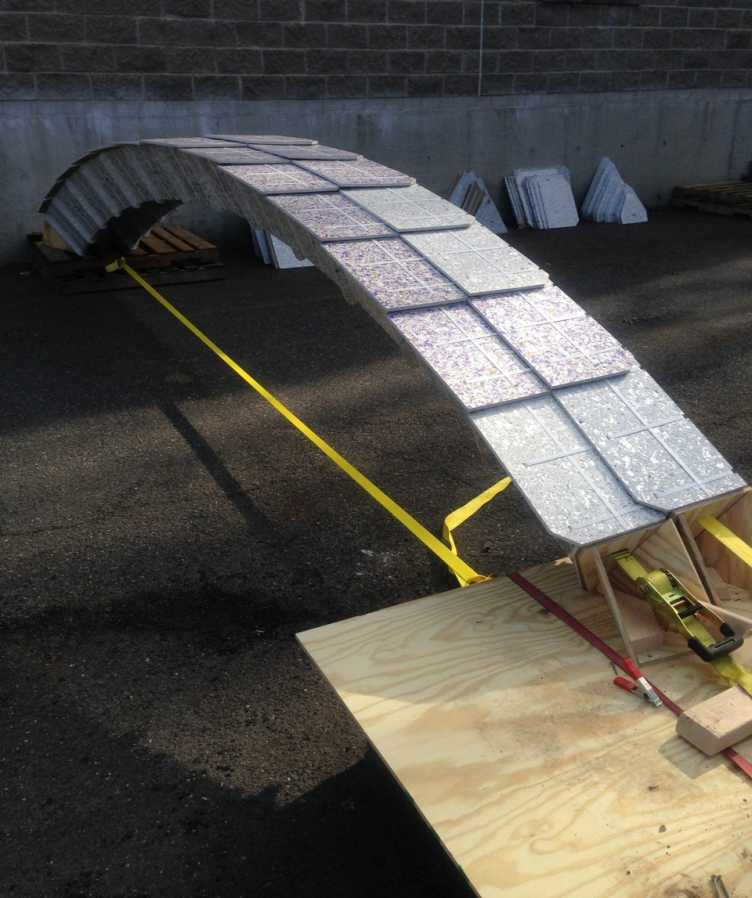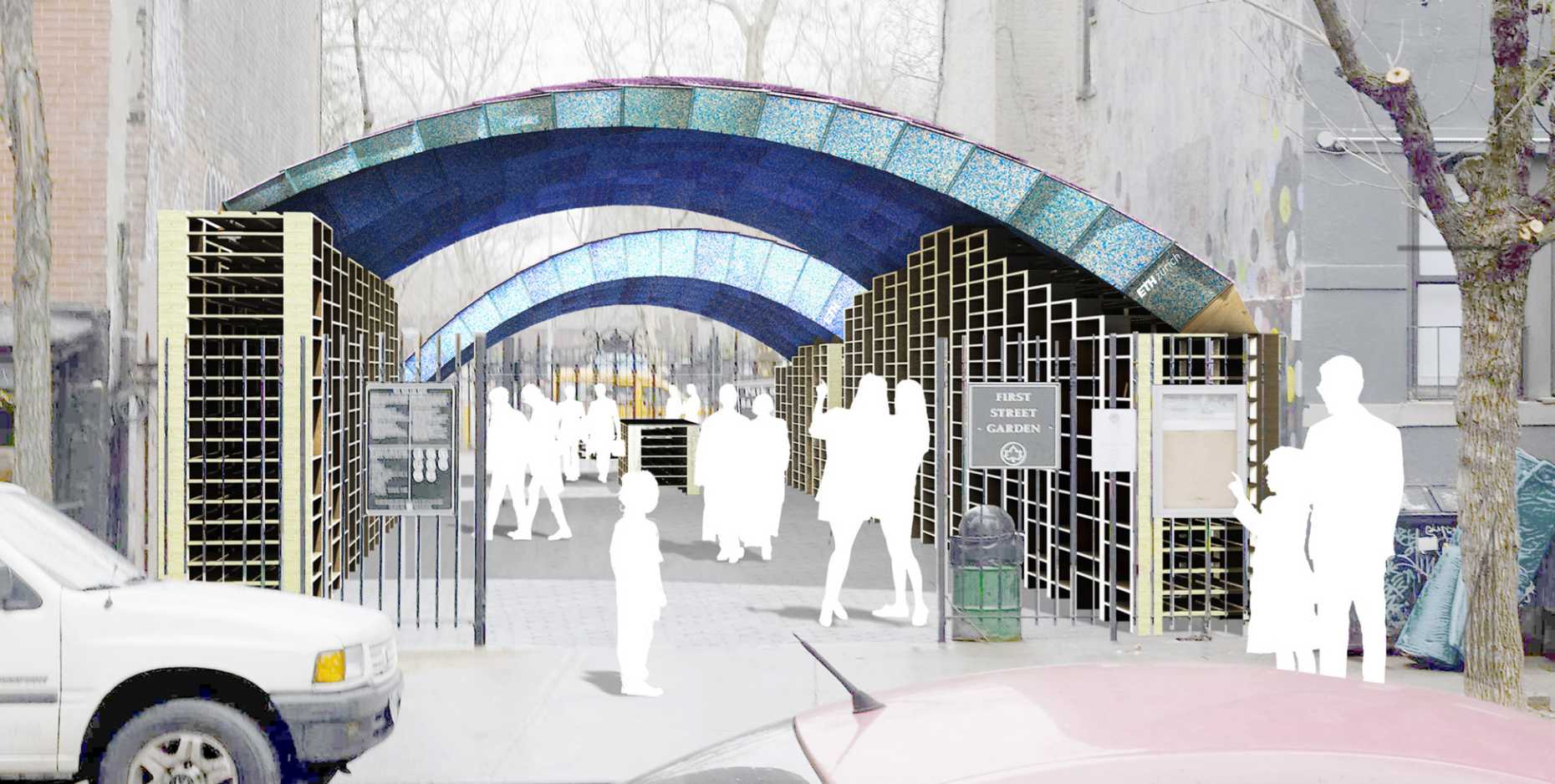A pavilion made from waste products
For the IDEAS CITY Festival in New York at the end of May, ETH Zurich is constructing a 90 m2 pavilion made from recycled beverage packaging. The project, led by ETH Global and Professor Dirk E. Hebel and Professor Philippe Block, aims to show the immense potential of waste for the construction sector.
You can't make an omelette without breaking eggs – this saying does not refer to the world's waste production, but it describes the phenomena surprisingly well: almost every human activity in which raw materials are transformed from one state to another with knowledge and generated energy produces waste. [1] For centuries, waste was considered a by-product that could be categorised neither as a raw material nor an end product, with no place in our dialectical understanding of "raw" and "processed".
But waste is also an integral component of our raw material world and we need to recognise its potential as a recyclable material for the creation of new products. In recent years, the monetary value of waste has been brought to the fore, influenced by the price of raw materials and stored energy, as well as the impact of increasingly scarce raw materials. We discussed the changing points of view with regards to waste as a natural resource in a previous blog post on this site.
Using discarded beverage cartons

ETH Zurich will take part in the 2015 IDEAS CITY Festival at New York's New Museum from 28-30 May. This year's theme is Invisible City. We are building a pavilion and organising a series of events that address waste as a building block of a city. While waste grows steadily, it is typically suppressed and is therefore almost invisible as a resource. Dirk E. Hebel, Assistant Professor of Architecture and Construction, and Philippe Block, Professor of Architecture and Structure, designed the pavilion. The design highlights the various ways in which waste material – obtained from discarded beverage cartons – can be used in a clever manner to build impressive and load-bearing structures.
Shredded and pressed

In 2013, an estimated 178 billion beverage cartons were consumed worldwide. [2] In theory, the materials (paper 74%, polyethylene 22%, and aluminium 4%) can be re-separated relatively well. But this task requires a special machine and uses large amounts of water and energy. Recycling rates have climbed substantially in recent years. Nevertheless, some 430,000 tons of beverage cartons were thrown away in 2010 in the United States alone. [3] In cooperation with U.S. company ReWall, the beverage cartons for ETH Zurich's pavilion will first be chopped up with a shredding machine. They will subsequently be pressed into panels on a conveyor belt using heat and pressure. Neither water, glue nor other additives are required, as the mixed material made up of aluminium, paper and polyethylene combines to form a waterproof entity. The surface reveals the source material through speckles, which stem from the coloured printing and shiny foil. [4] A crucial factor in the choice of materials was the fact that the three substances used by the food packaging industry does not contain any harmful substances. Following their use in the pavilion structure, they can be fully integrated into the firm's regular recycling process. The structure will be dismantled in mid-June.
Material to Design

Until now, the material was produced for interior panelling and used as a substitute for interior plasterboard. ETH Zurich's pavilion deploys it as a load-bearing construction material for exterior use for the first time. As the plates can warp slightly and possess weaker properties in terms of tension and bending, we have optimised the structure's form to account for compression forces. The 90 m2 overarching shell is composed of 40 single, pre-stressed arches, which follow the flow of forces and simply absorb the compression forces. The single, triangular building blocks enlarge the static height, reducing the structure's weight and make prefabrication possible.
A team composed of the Professors' staff will create a pop-up storefront event to prefabricate the structure in New York City, and assemble it within four days at the First Street Garden. ETH Global and New Museum will use the structure to host events ranging from seminars and lectures to parties and exhibitions during the IDEAS CITY Festival. The events will include Building from waste, a collection of 20 construction materials derived from waste, compiled by the authors of the book of the same name: Dirk E. Hebel, Marta H. Wisniewska, and Felix Heisel.
This entry was written by Dirk Hebel together with Felix Heisel. Heisel researches alternative construction materials at the Assistant Professorship for Architecture and Construction at ETH Zurich and the Future Cities Laboratory in Singapore.
Further information
For more information on the program, the material or the festival, please refer to the following links:
ETH Global: article
IDEAS CITY: external pageprogramcall_made
Assistant professor Dirk E. Hebel: link
Block Research Goup: link
References:
[1] Hebel, Dirk E., Marta H. Wisniewska and Felix Heisel (2014). Building from Waste, Recovered Materials in Architecture and Construction. Berlin, Basel: Birkhäuser.
[2] Tetra Laval (2014). ‘The Tetra Laval Annual Report: Ensuring Food Protection’. No. 2013/2014, Pully: Tetra Laval.
[3] Miller, Chez (2013). Profiles in Garbage: Aseptic Boxes & Cartons. Waste 360 external pageWebpagecall_made, retrieved April 28, 2015.
[4] The ReWall Company, LLC (2015). ReWallution. The ReWall Company external pageWebpagecall_made, retrieved April 27, 2015.


